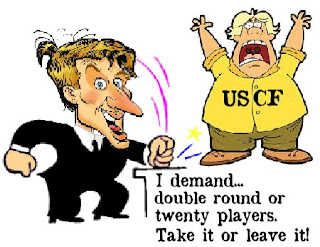 |
| The Chess Patron |
She is not to be confused with the English romance writer Benita Brown who publishes under the pseudonym Clare Benedict or Claire Benedict the British actress known for her work in classical productions on the British stage and radio productions.
 |
| The Actress |
This Clare Benedict was born in Cleveland, Ohio in 1870 and died in 1961. A distant relative of James Fenimore Cooper, she was a wealthy heiress as a result of an inheritance from steel and oranges. She spent much of her life in Europe, traveling with her aunt, the writer Constance Fenimore Woolson (1840-1894) and later with her mother Clara (1844-1923). She visited various places, attended festivals, concerts and theatrical performances. She died in 1961 in Lucerne, Switzerland, where she had lived since 1941 and was buried in Rome.
 |
| The Author |
After he mother died in 1923 she gave money to the Cimitero Acattolico in Rome to raise the wall around it and for gardening. With her help in 1938, Rollins College in Winter Park, Florida opened the Woolson House and installed The Clare Benedict Collection of Constance Fenimore Woolson there. It also houses documents relating to Clare Benedict’s life.
The English Department of Basel University profited from her generosity. When she lived in Basel from 1939 to 1941 she became interested in the work done in the department's work and in 1952 helped to create the “James Fenimore Cooper Stipendien-Fonds” which supports the study of Anglo-Saxon language, literature and culture. She also donated shelves, furniture and other items. When she died she bequeathed part of her library to the department.
Shortly before her death she put together a library of books authored by people buried at the Cimitero Acattolico in Rome which she gave to the cemetery. There is also a tulip that carries her name: Tulipa eichleri 'Clare Benedict’.
The first Clare Benedict Cup took place in 1953 in The Netherlands. The second, in 1954, was the only individual tournament in the history of the event. The line-up was very strong, with two GMs and four IMs...very impressive in those years. The participants included Dr. Max Euwe and GM Petar Trifunovic of Yugoslavia. Dr. Trifunovic has the distinction of being the only player from a Communist country to ever hve participated in one of the events. West Germany's 26-year old Lothar Schmid finished first ahead of surprising second place winner Dr. Erwin Nievergelt of Switzerland while Euwe could only manage third place. Trifunovic finished with a disappointing even score. Schmid's success resulted in a GM title awarded to him in 1959.
Born in Zurich in 1929, Nievergelt was one of Switzerland's biggest hopes in the 1950s. He represented Switzerland at two chess Olympiads. Chess ended up taking a back seat to his career in the fledgling fields of Operations Research and Computer Science. For almost a quarter of a century he finally worked as a professor at the University of St. Gallen. After his retirement, Nievergelt, who was also gifted as a concert pianist, moved to the south, where he found a second and third home in Italy and Spain.
The following game is from the 7th Cup held in Biel in 1960 and won by the West German team. Gerhard Pfeiffer (June 14, 1923 – June 27, 2000) was an IM (title awarded in 1957) and chess problemist. He played for West Germany in six Olympiads where he won two bronze medals (team and individual). I was unable to locate much information on Italian Master Stefano Bruzzi except that he was born July 5, 1936 and died at the age of 81. At some point he moved to England sometime in the early 1960s where he played for the Surbiton Chess Club right up to the end of his life. He was also a noted expert on endings. Update 2-2-22: According to an anonymous poster Stefano Bruzzi died on 30 January, 2022 and up until the last season he had been a regular for Surbition.










